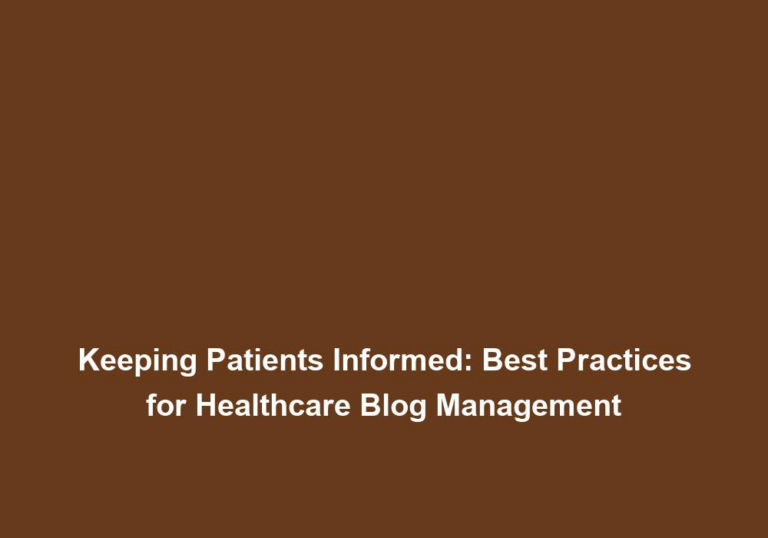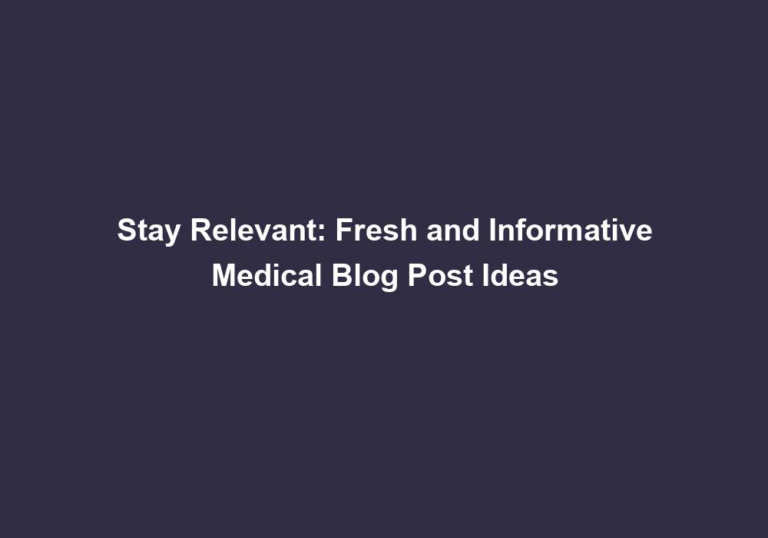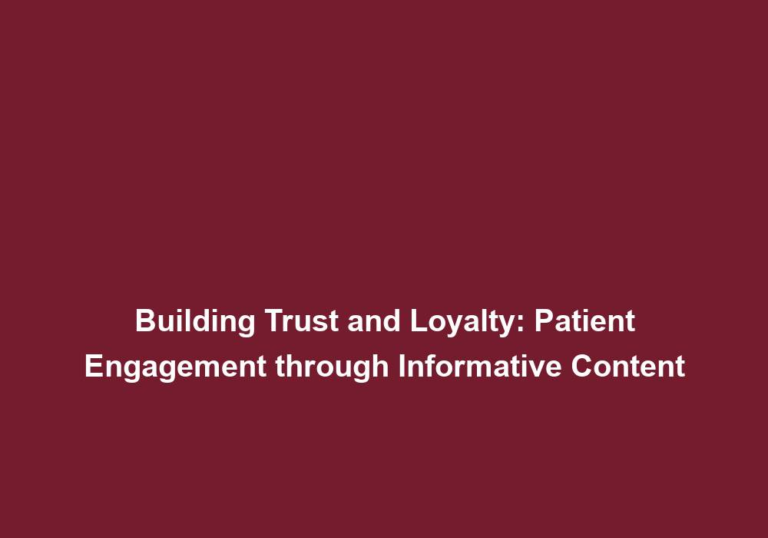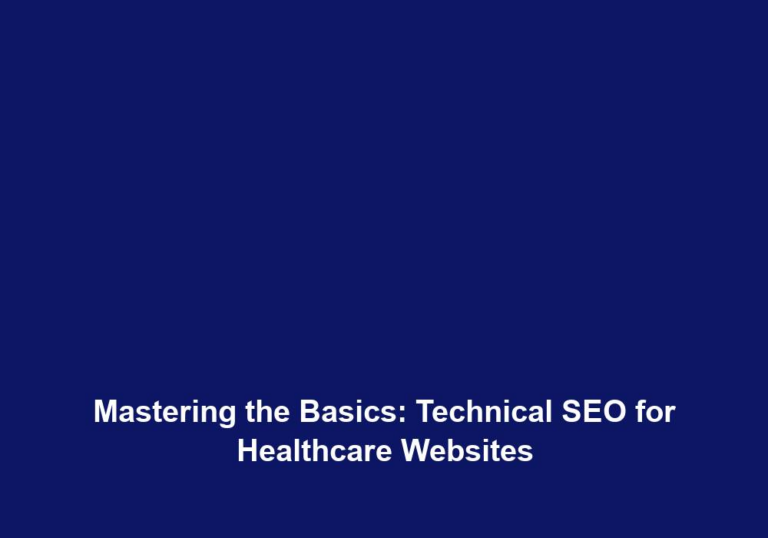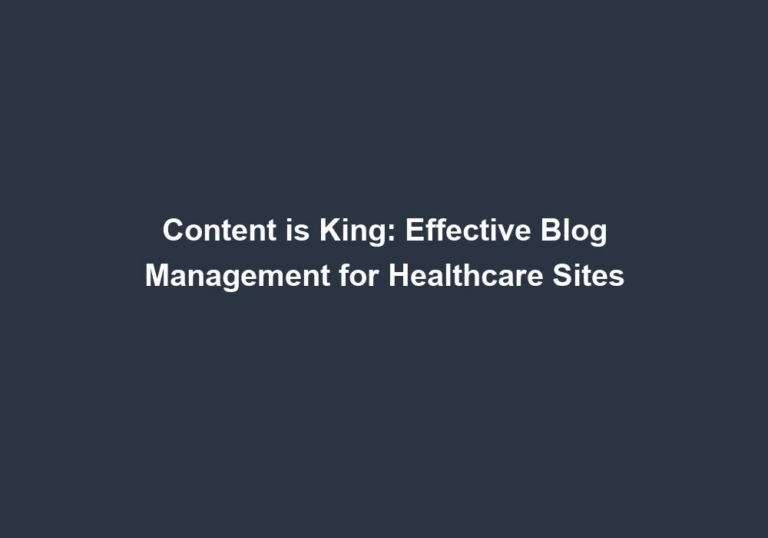Deepening Patient Connections: Engaging Content Strategies for Healthcare Blogs
In today’s digital age, healthcare providers are increasingly recognizing the importance of maintaining strong connections with their patients. Engaging content strategies for healthcare blogs play a vital role in fostering these connections by providing valuable information and creating meaningful interactions. In this article, we will explore effective strategies that healthcare providers can employ to deepen patient connections through their blog content.
1. Understanding the Target Audience
Before diving into content creation, it is crucial to understand the target audience for your healthcare blog. By identifying the demographics, interests, and needs of your patients, you can tailor your content to address their specific concerns. Conducting surveys, analyzing patient feedback, and monitoring online conversations can provide valuable insights into what your audience is looking for.
Understanding your target audience allows you to create content that resonates with them on a deeper level. Here are some tips to achieve this:
-
Address Common Patient Concerns: Identifying the most common concerns or questions that your patients have and addressing them in your blog articles helps establish yourself as a trusted source of information. By providing informative and relevant content, you can reassure your patients and build their trust.
-
Use Easy-to-Understand Language: Avoid medical jargon and use plain language that your patients can easily understand. This makes your content more accessible and engaging, ensuring that patients can grasp the information without feeling overwhelmed.
-
Humanize Your Content: Share personal stories and experiences to humanize your blog content. By showcasing real-life examples, you can connect with your patients on a deeper level and make your content more relatable. This helps to establish a sense of empathy and build stronger connections.
-
Incorporate Visuals: Including visuals, such as images, infographics, or videos, can enhance the visual appeal of your blog posts and make them more engaging. Visual content can effectively convey complex information and increase overall user engagement. It also helps patients to better understand the content and retain the information.
2. Consistency is Key
Maintaining a consistent blogging schedule is essential to keep your audience engaged and coming back for more. Here’s why consistency matters:
-
Establishes Credibility and Trust: Consistently publishing high-quality content demonstrates your commitment to providing reliable and up-to-date information. By building credibility and trust, you encourage patients to rely on your blog as a valuable resource. They will see your commitment to their well-being and feel confident in seeking information from your blog.
-
Boosts Search Engine Optimization (SEO): Search engines value fresh content, and consistent blogging helps improve your website’s visibility in search engine rankings. By regularly publishing relevant content, you increase your chances of attracting organic traffic and reaching more patients. This allows your blog to be easily discovered by patients who are actively seeking healthcare information.
-
Establishes Brand Identity: Consistency in your blog content helps establish a recognizable brand identity. Patients will easily recognize your voice, style, and values, further strengthening the connection between your brand and your audience. This consistency reinforces your brand image and fosters a sense of familiarity and trust among your patients.
3. Encouraging Patient Engagement
Engagement is a key component of deepening patient connections. Here are some strategies to encourage patient interaction:
-
Enable Comments and Feedback: Allow readers to leave comments and provide feedback on your blog posts. This opens up a channel for patients to ask questions, share their experiences, and engage in discussions. Responding promptly and thoughtfully to comments shows that you value patient input and encourages ongoing engagement. It also creates a sense of community and encourages patients to actively participate in the conversation.
-
Incorporate Social Sharing Buttons: Make it easy for patients to share your blog posts on social media platforms. By incorporating social sharing buttons, you empower patients to spread your content, reach a broader audience, and potentially attract new patients. This extends the reach of your blog and increases its visibility among a wider audience.
-
Create Interactive Content: Consider creating interactive content such as quizzes, surveys, or polls to actively involve patients. Interactive elements make the content more engaging and encourage patients to actively participate in their healthcare journey. This not only increases their engagement but also provides valuable insights into their preferences and needs.
4. Utilizing SEO Best Practices
To ensure your healthcare blog reaches a wider audience, it is essential to implement SEO best practices. Here are some key strategies:
-
Keyword Research: Conduct thorough keyword research to identify the terms and phrases that patients are using to search for healthcare information. Incorporate these keywords strategically throughout your blog posts to improve organic search rankings. This helps search engines understand the relevance of your content and increases the chances of your blog appearing in search results.
-
Meta Tags and Descriptions: Optimize your meta tags and descriptions with relevant keywords to improve the visibility of your blog posts in search engine results pages (SERPs). Well-crafted meta tags and descriptions can entice patients to click on your blog posts, increasing the click-through rate and driving more traffic to your blog.
-
Internal Linking: Include internal links within your blog posts to guide patients to related content on your website. Internal linking not only improves user experience but also helps search engines understand the structure and hierarchy of your website. This improves the overall navigation of your blog and increases the chances of patients discovering more valuable content.
Conclusion
By adopting these engaging content strategies for healthcare blogs, healthcare providers can deepen patient connections, establish trust, and become a valuable resource for patients seeking reliable healthcare information. Remember to continuously evaluate the effectiveness of your content strategies and adapt them to meet the evolving needs of your target audience. With a patient-centric approach and consistent effort, your healthcare blog can foster meaningful connections that positively impact patient outcomes.



